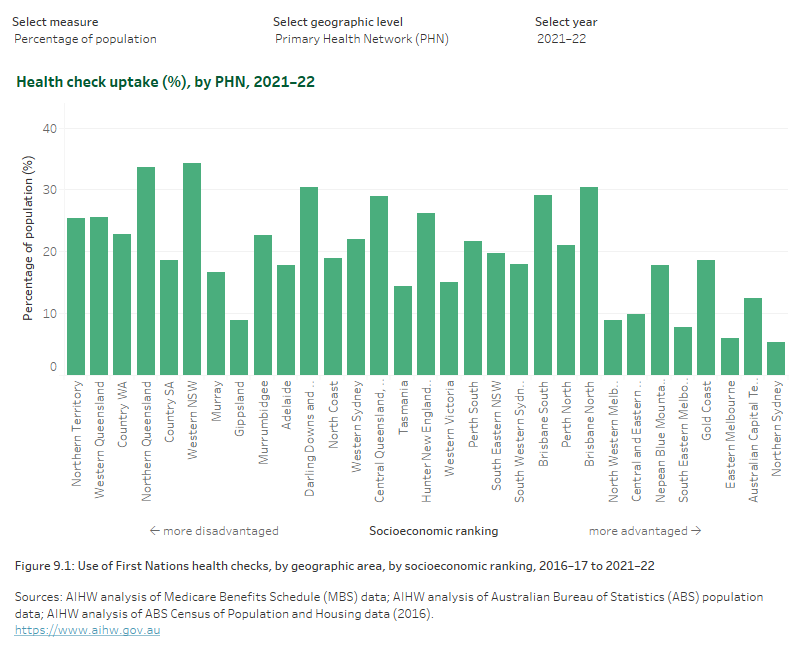Comparison of areas by socioeconomic ranking
Exploratory analysis: Areas ranked by socioeconomic profile
- Relative socioeconomic scores were calculated for PHNs, IREGs and SA4s based on the number of Aboriginal and/or Torres Strait Islander people counted in each decile from the ABS’ 2016 Census-based Index of Household Advantage and Disadvantage (IHAD) analysis (ABS 2019a).
- Effectively, the socioeconomic scores for each area give the average IHAD decile number for the First Nations population (living in private dwellings). Note that socioeconomic characteristics may have changed over time.
Geographic information
This analysis is based on the postcode of the patient’s given mailing address. As a result, the data may not always reflect where the person actually lived – particularly for people who use PO boxes. This is likely to impact some areas more than others and will also have a generally greater impact on the accuracy of smaller geographic areas.
Between 2016–17 and 2021–22:
- While there was a considerable amount of deviation, First Nations people living in more disadvantaged PHNs and SA4s tended to have higher uptake of health checks than those living in more advantaged PHNs and SA4s.
- This pattern was more pronounced in the earlier years of the time-series, becoming less noticeable in 2021–22.
- This tendency did not hold when comparing IREGs.
- Some SA4 populations had relatively high uptake of health checks – compared with SA4s with similar socioeconomic profiles – many of which were in Queensland.
Figure 9: Use of First Nations health checks, by geographic area, by socioeconomic ranking, 2016–17 to 2021–22
An interactive graph. Refer to table HC09 in data tables. A long description is available below.

An interactive column graph showing uptake of health checks by geographic area, sorted by the socioeconomic scores of areas, which suggests that health check uptake generally decreases as socioeconomic advantage increases. Refer to table HC09 in data tables.
References
ABS (Australian Bureau of Statistics) (2019a) Experimental Index of Household Advantage and Disadvantage, 2016, ABS, Australian Government, accessed 10 August 2023.


